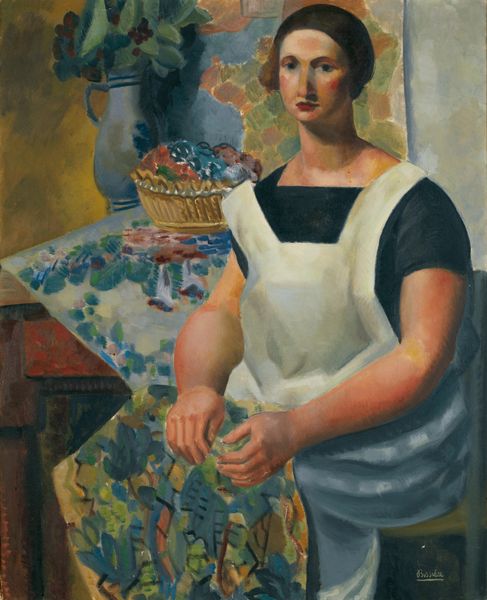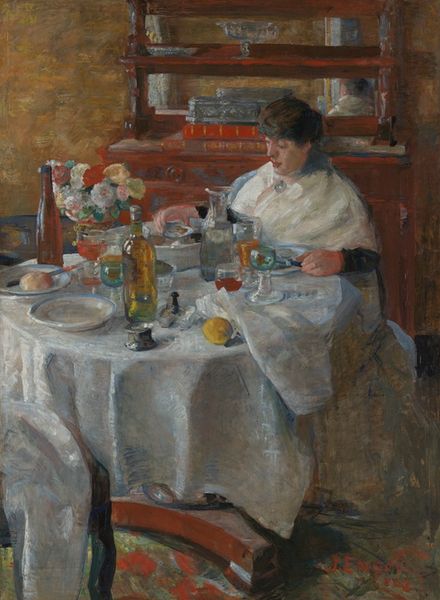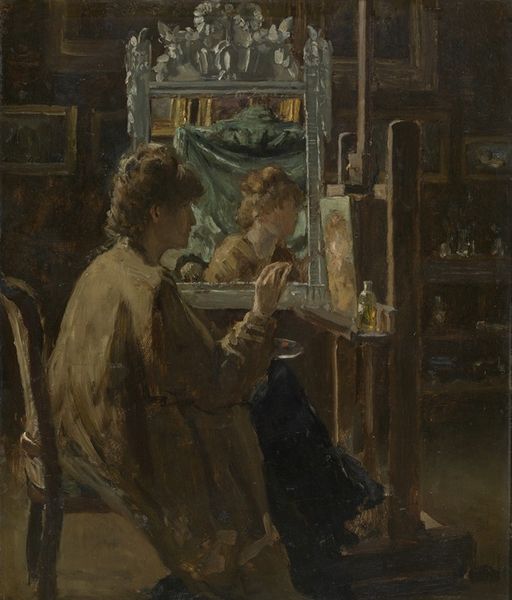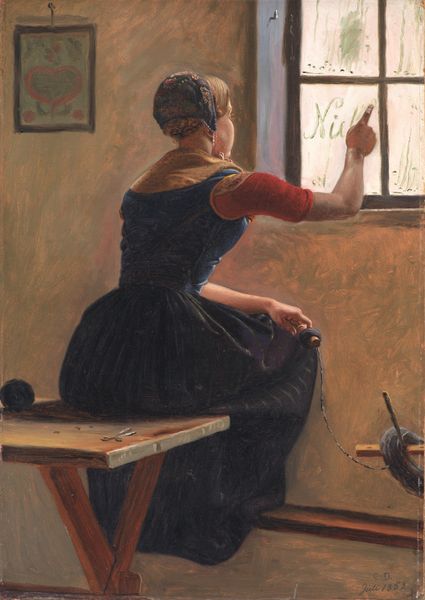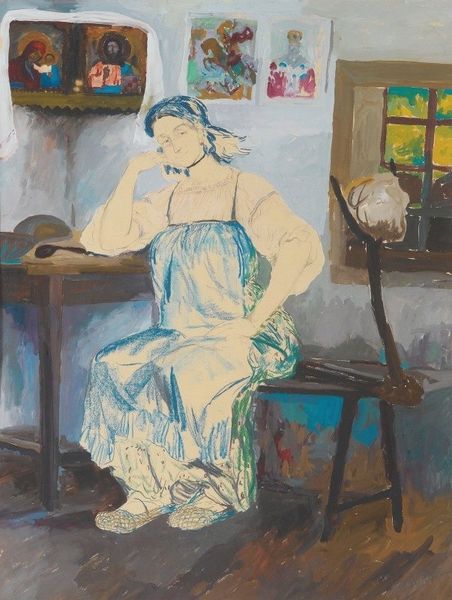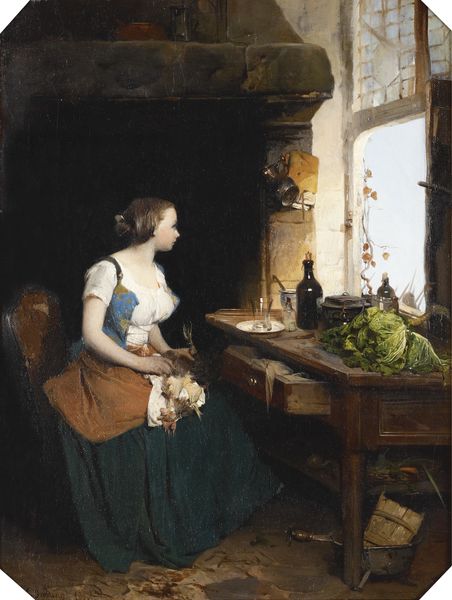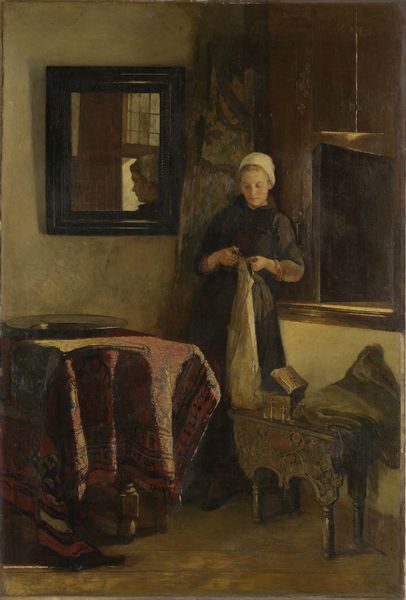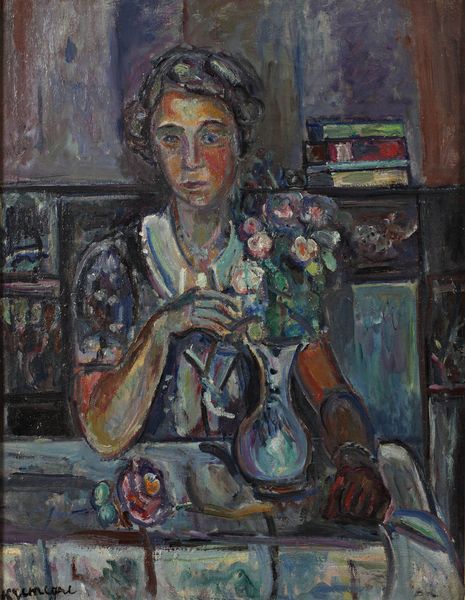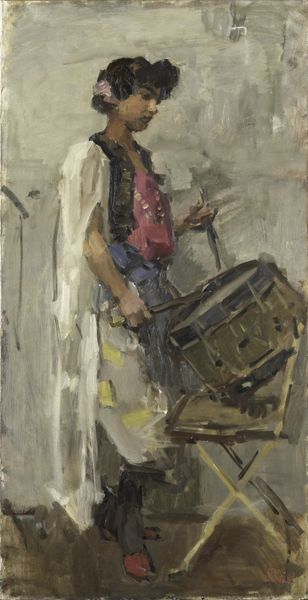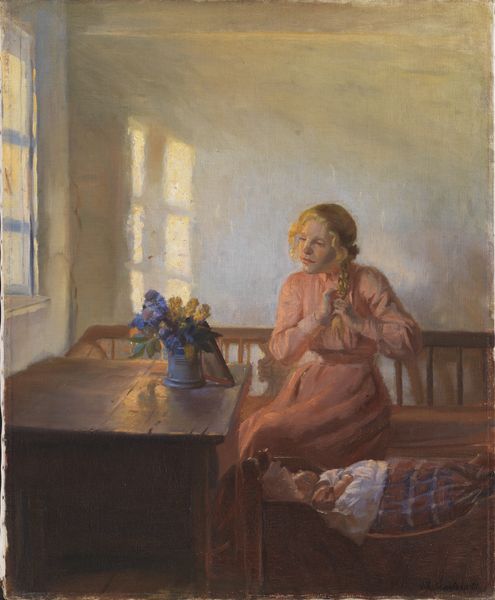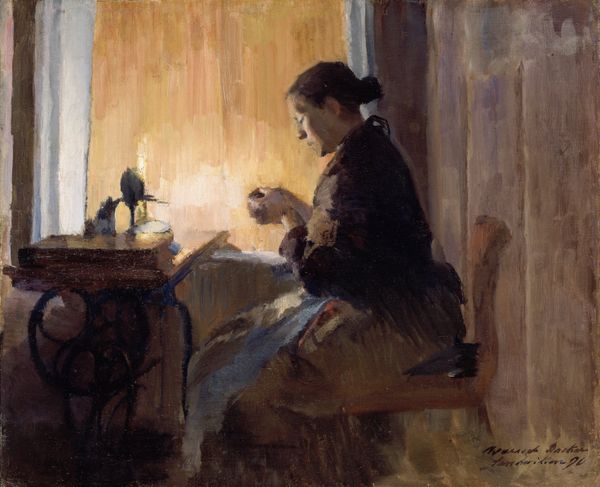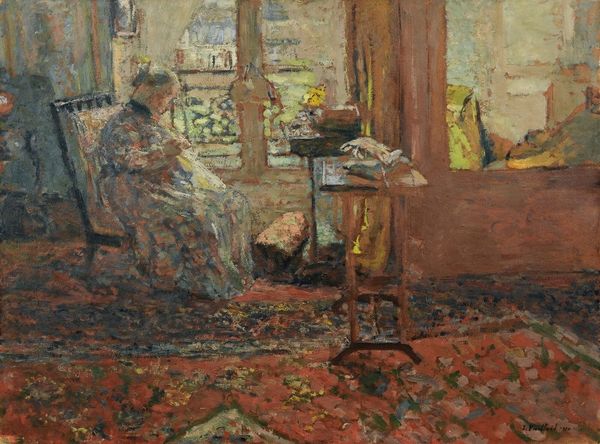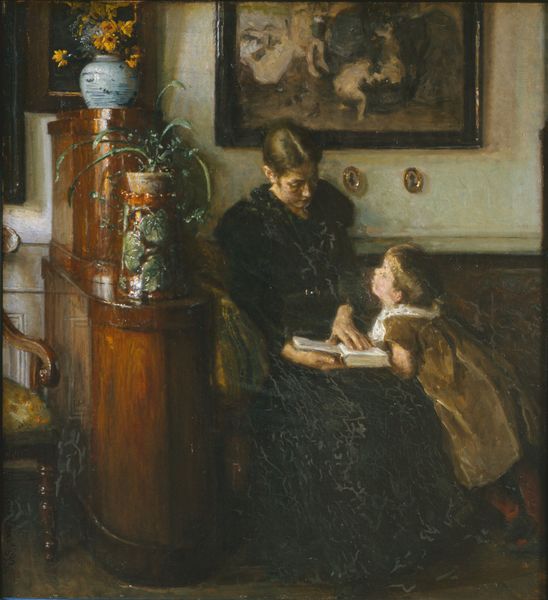
oil-paint
#
portrait
#
figurative
#
oil-paint
#
oil painting
#
genre-painting
#
portrait art
#
modernism
#
realism
Copyright: Modern Artists: Artvee
Curator: Welcome. Before us is Norman Rockwell’s 1923 painting, “Dreams in the Antique Shop," rendered in oil paint. What is your first impression? Editor: Overwhelming clutter, a cacophony of textures! There's a distinct sense of compression, a very material reality of a space filled to the brim with objects. You can almost smell the dust and beeswax. Curator: Rockwell masterfully employs genre painting tropes to explore the psychology of memory. The girl seems suspended between worlds. Note the antique shop’s owner is almost spectral. What objects draw your attention? Editor: Well, immediately my eyes are drawn to the textures—the contrast between the smoothness of the golden teapot she’s holding and the rougher texture of the wood chest, all these varied surfaces jostling for attention. The materiality is foregrounded. Was this a common consumer environment then? Curator: Yes, I think this resonates as an early 20th-century cultural moment— the growing availability of mass-produced items alongside older, handcrafted goods. The objects themselves become repositories of dreams, and of course class identity and memory. That teapot she holds – notice it’s highly polished and seems a more recent addition. A signifier of aspirational culture? Editor: The 'readymade' blends with heirlooms... it complicates our notions of value and historical lineage. All of those different material contexts have their own history of labour and design imbedded. The presence of that 'new' teapot is almost subversive! Curator: Subversive, certainly an element in many Rockwell compositions. His portraits often use commonplace settings as mirrors, so the audience sees reflected their own anxieties and values around progress. What's cast off, and what do we choose to keep and imbue with meaning? Note her wistful gaze, her careful dress. Editor: True, this isn't just a visual document, it engages a narrative. This feels almost cinematic – setting a story to unfold, one about history, desire, and commodity culture that echoes loudly today. It makes me rethink the labour, processes and the original purpose of the things amassed in these surroundings. Curator: Indeed. For me, that little kitten is the lynchpin; our own nostalgia embodied. Editor: Ah, the kitten! Always drawing attention to the present moment. Rockwell definitely captured an era, prompting questions about consumption and enduring value through materiality. Thank you for the new perspective! Curator: My pleasure. There's always so much to unearth within such meticulously staged imagery!
Comments
No comments
Be the first to comment and join the conversation on the ultimate creative platform.
